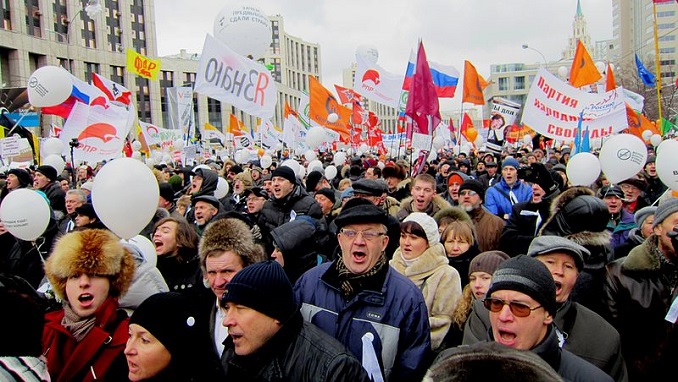Russia’s wealth inequality has skyrocketed and has surpassed the level of the United States, Meduza writes in a new report on Russian wealth disparity. The richest 1% of the population controls more than a third of Russia’s wealth, the poor are getting poorer, and most of the wealth produced domestically is hoarded and invested abroad, the news outlet writes.
In terms of income inequality, Russia is now similar to the United States, but both countries are far more unequal than a place like France, which like the rest of Western Europe makes a concerted effort to distribute earnings more evenly. Since the end of Communism, Russian income stratification has outpaced every other former socialist economy, including China, the report says.
According to Meduza, the Russian government has so far done too little to combat the inequality problem, with solutions often being restricted to special taxes on “crooked privatizations,” high inheritance taxes, and different forms of nationalization.
In addition to its existing flat income tax, Russia currently taxes mining and drilling operations, which is how the state seizes some of the super-profits earned by billionaires.
But according to the report, this isn’t enough. Over the next several years, the Russian government plans to spend billions of dollars on several massive construction projects.
“The money needed for these colossal undertakings will come from ordinary taxpayers, and the few citizens whose wealth and income have skyrocketed over the past three decades are contributing the same 13 percent as everyone else,” Meduza writes.
Over the past decade, income inequality has fallen in Russia. Moscow State University Professor Natalia Zubarevich attributes this shift to the redistribution of “oil rents”: the state extracts the lion’s share of oil companies’ revenues, which ballooned thanks to high prices worldwide, and then allocates this money to social spending on salaries for doctors, teachers, and others.
According to the authors of “From Soviets to Oligarchs: Inequality and Property in Russia, 1905–2016,” which appeared last year in The Journal of Economic Inequality, average per-adult national income in Russia grew 41 percent in the quarter-century after the Soviet Union’s collapse. “However, the different income groups have enjoyed widely different growth experiences,” the researchers conclude. The top 10-percent earners enjoyed “very large growth rates” (171 percent), the middle 40-percent saw “positive but relatively modest growth” (15 percent), and the bottom 50-percent earners benefited from “very small or negative growth” (-20 percent).












